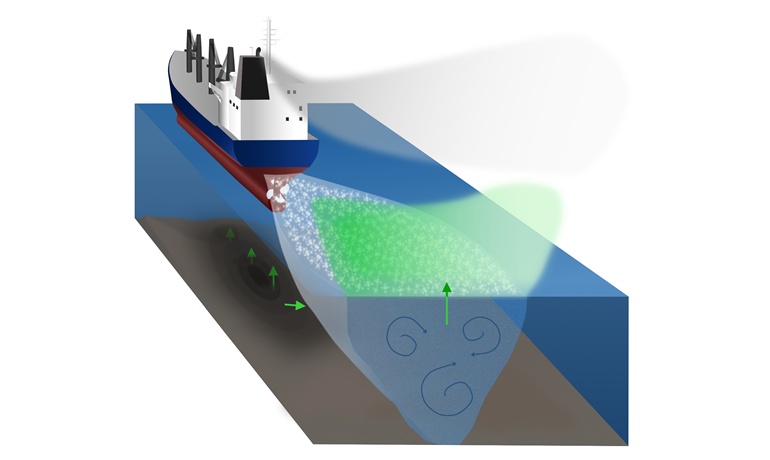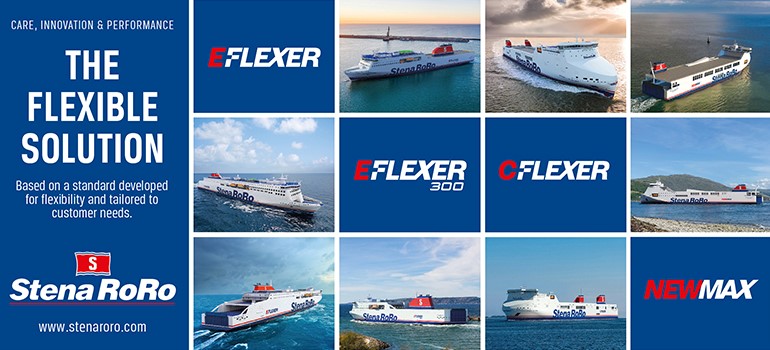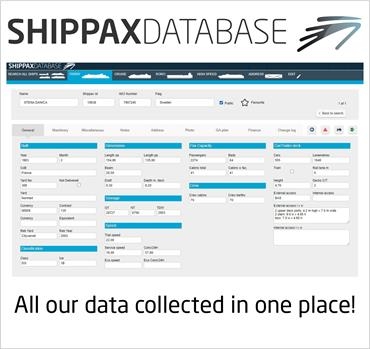
Ship Traffic in Shallow Waters Triggers Significant Methane Emissions, Study Reveals
Ship traffic in shallow areas, such as harbours, can trigger significant methane emissions through their movements in the water. This is shown by a Chalmers-led study where researchers observed methane emissions twenty times higher in shipping lanes compared to nearby undisturbed areas. Despite methane being a greenhouse gas 27 times more potent than carbon dioxide, these emissions are often overlooked with current measurement methods.
– Our measurements show that ship passages trigger distinct pulses of high methane flows from the water to the atmosphere. This occurs through pressure changes and mixing of the water mass. Although the pulses are short, the total amount over a day is significant, says Amanda Nylund, researcher at Chalmers and SMHI.
Methane is a potent greenhouse gas, and the danger of methane emissions from the few ships powered by liquefied natural gas (LNG) is a highly debated topic in maritime contexts. In the current study, the measured methane emissions are entirely independent of the ships’ choice of fuel. This means that all ships can cause emissions, and thus, the maritime sector’s greenhouse gas emissions have previously been underestimated. The researchers point out that although methane occurs naturally in seabed sediments, extensive release into the atmosphere occurs through ship activity.
The study focuses on shallow marine areas where seabed sediments are oxygen-free and rich in organic material. In such environments, methane is naturally formed in the sediments, and at high production levels, the gas can leak or bubble up into the water above. When a ship passes, the pressure at the seabed changes, and methane bubbles escape more easily from the sediments. Combined with the mixing caused by the ship’s wake, methane can quickly rise to the surface and further into the atmosphere.
The phenomenon was discovered by chance
The article, published in Nature Communications Earth & Environment, is unique in its kind and the result of broad research collaboration. The phenomenon of extensive methane emissions in shallow waters was first discovered by chance during other measurements in the Neva Bay in the Baltic Sea.
– The discovery of ships’ previously unknown impact is important for improving global estimates of methane emissions, especially considering that nine of the world’s ten largest ports are located in waters with similar conditions to Neva Bay, says Johan Mellqvist, professor of optical remote sensing at Chalmers, whose group made the unexpected discovery that forms the basis for the new results.
Two of the largest ship types, cruise and container ships, triggered the most frequent and largest measured methane emissions, but even the slightly smaller ro-pax ships caused significant emissions. Meanwhile, one of the largest ship types (larger than ro-pax and container ships), bulk carriers, accounted for lower emissions. This suggests that the relationship between ship size and methane emissions is more complex than a simple correlation with size.
– A possible explanation for the high emissions from ro-pax ships is that they have dual propellers, says Rickard Bensow, professor of hydrodynamics at Chalmers and responsible for the study’s modelling of ship traffic.
Will investigate emissions in large shallow harbours
The authors of the new study now emphasise the need to rethink how and where methane measurements are conducted, particularly in coastal waters where natural and human factors interact. They place particular focus on further investigating large harbours in river deltas.
– The next step is to estimate how significant these effects may be globally. Large ports in China, Singapore, and South Korea, as well as European ports like Rotterdam, Antwerp, and river systems in Germany, have similar conditions to Neva Bay. It is highly likely that we are also underestimating methane emissions there, says Ida-Maja Hassellöv, professor of maritime environmental science at Chalmers, who will lead the follow-up project starting this autumn.
More about the research:
Read the scientific article Coastal methane emissions triggered by ship passages in the journal Nature Communications Earth & Environment. It is authored by Amanda T. Nylund, Johan Mellqvist, Vladimir Conde, Kent Salo, Rickard Bensow, Lars Arneborg, Jukka-Pekka Jalkanen, Anders Tengberg, and Ida-Maja Hassellöv. The researchers are affiliated with Chalmers, SMHI, and the Finnish Meteorological Institute.
© Shippax
Jul 03 2025


















